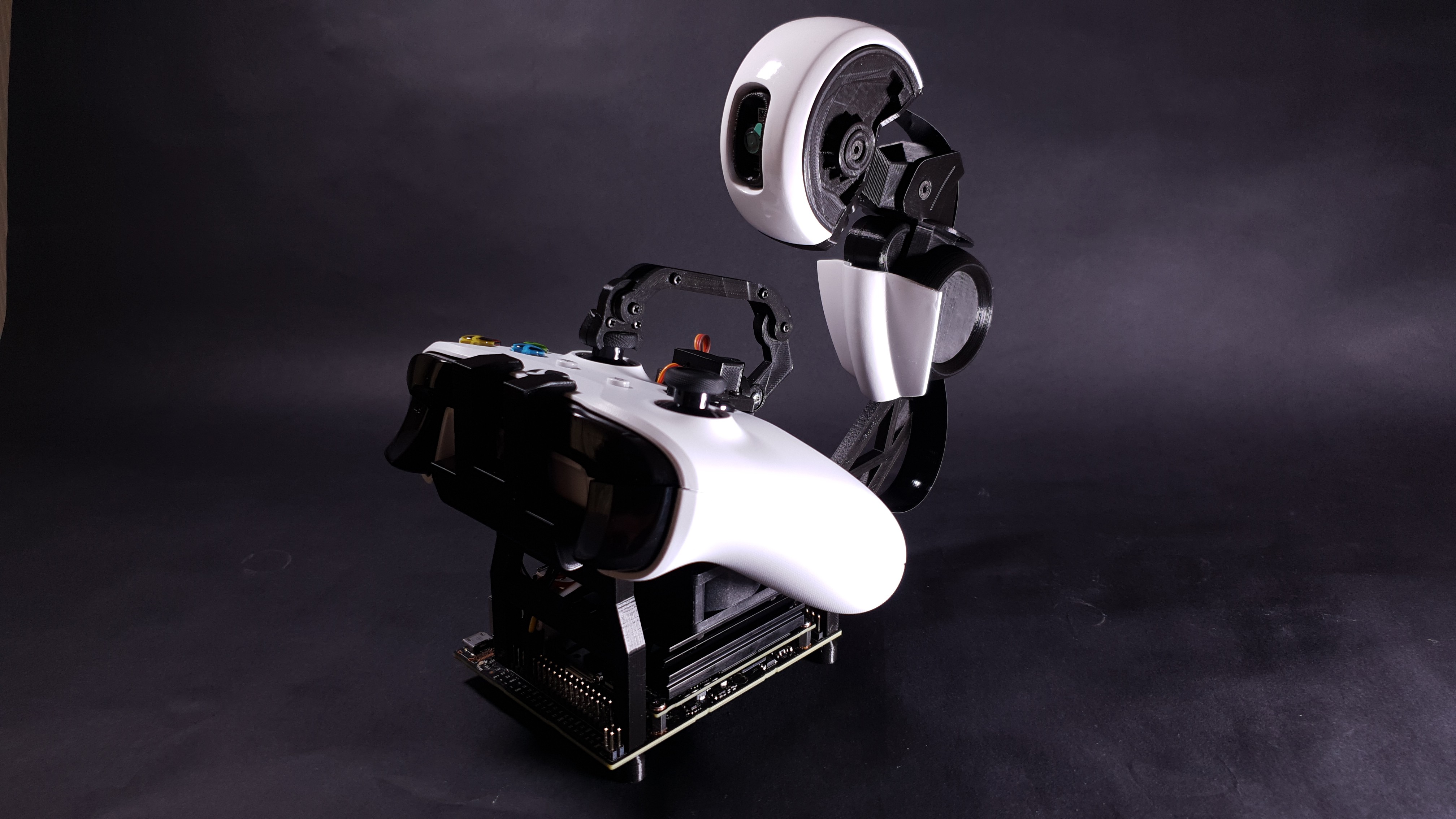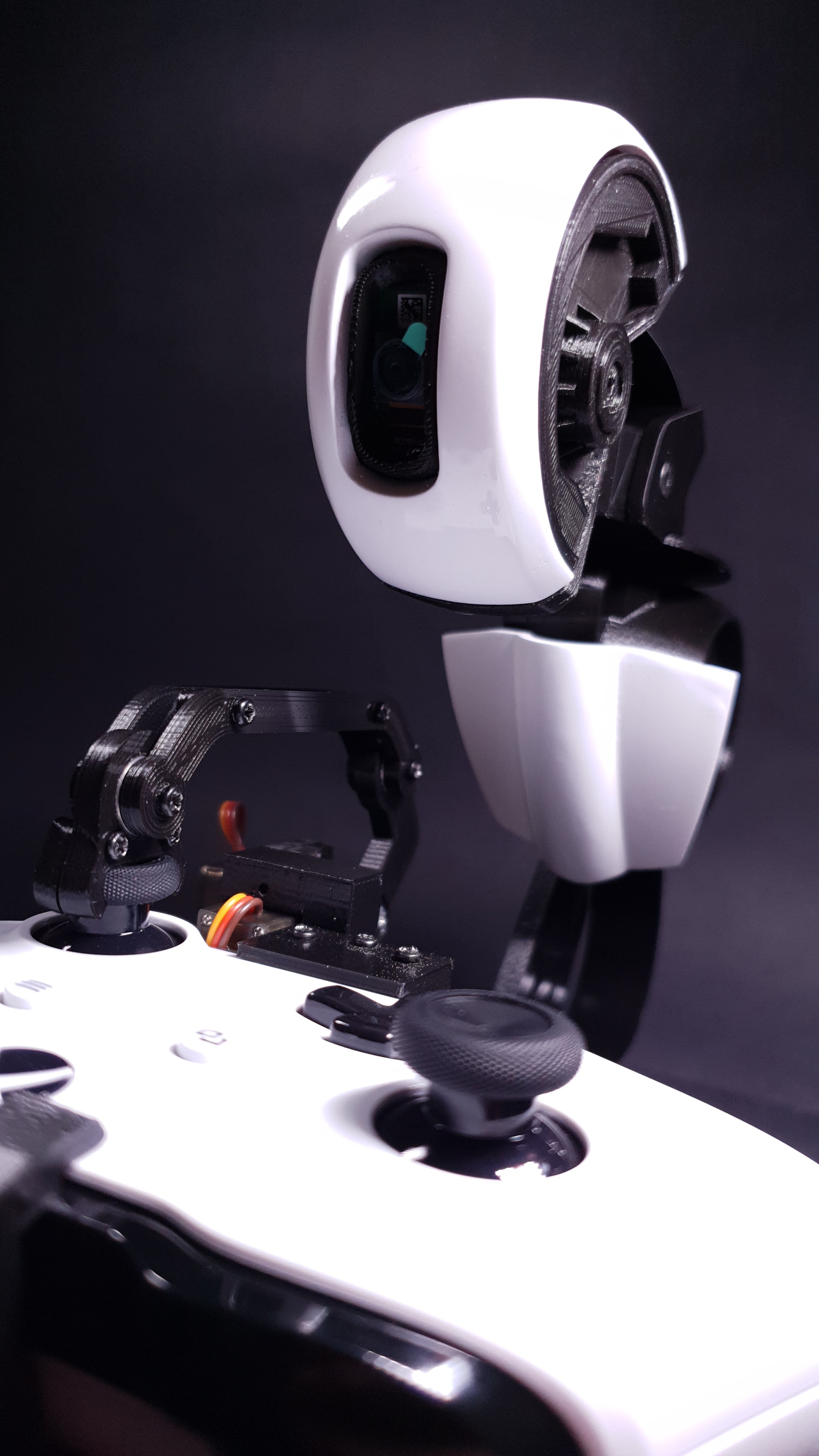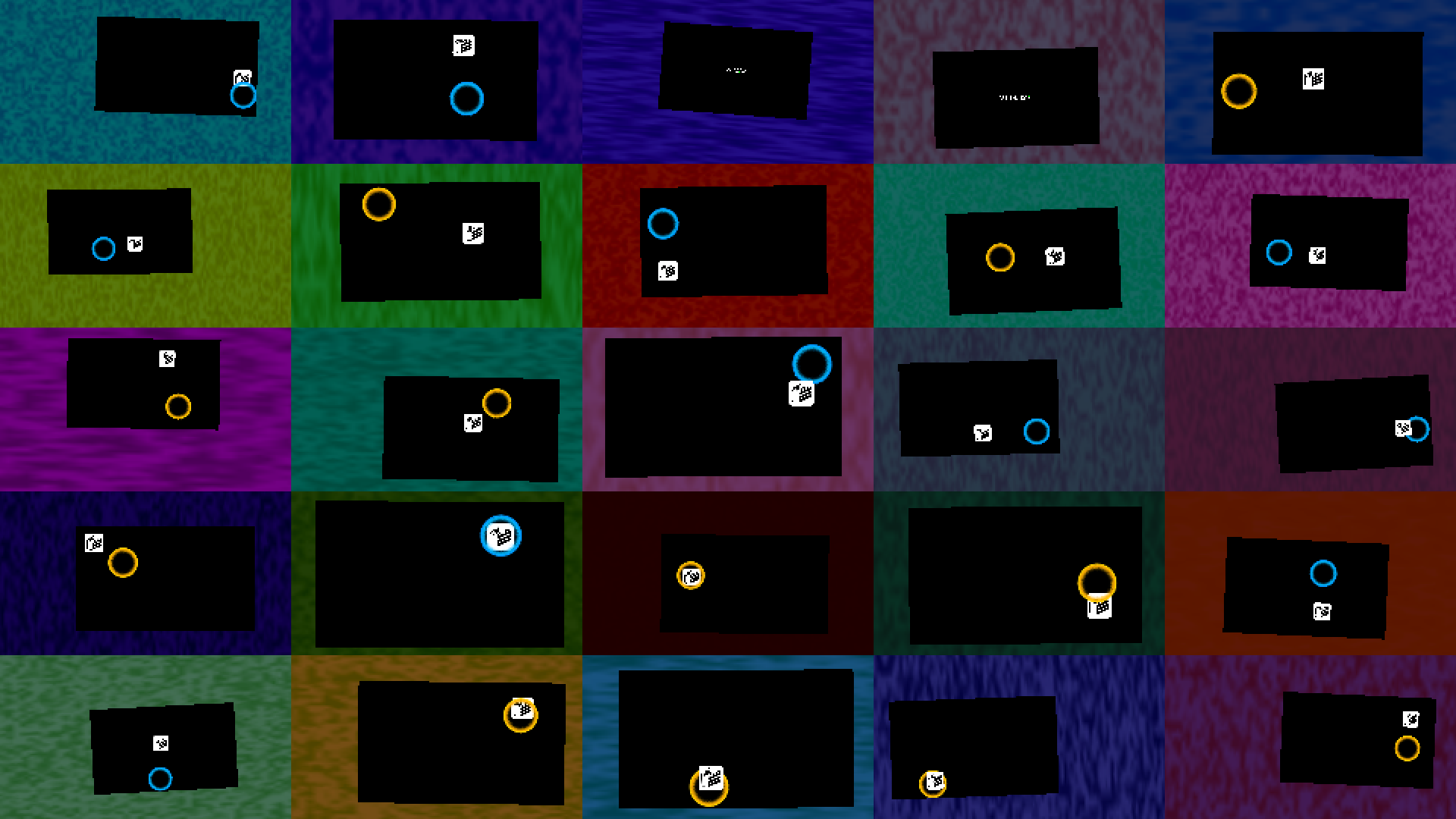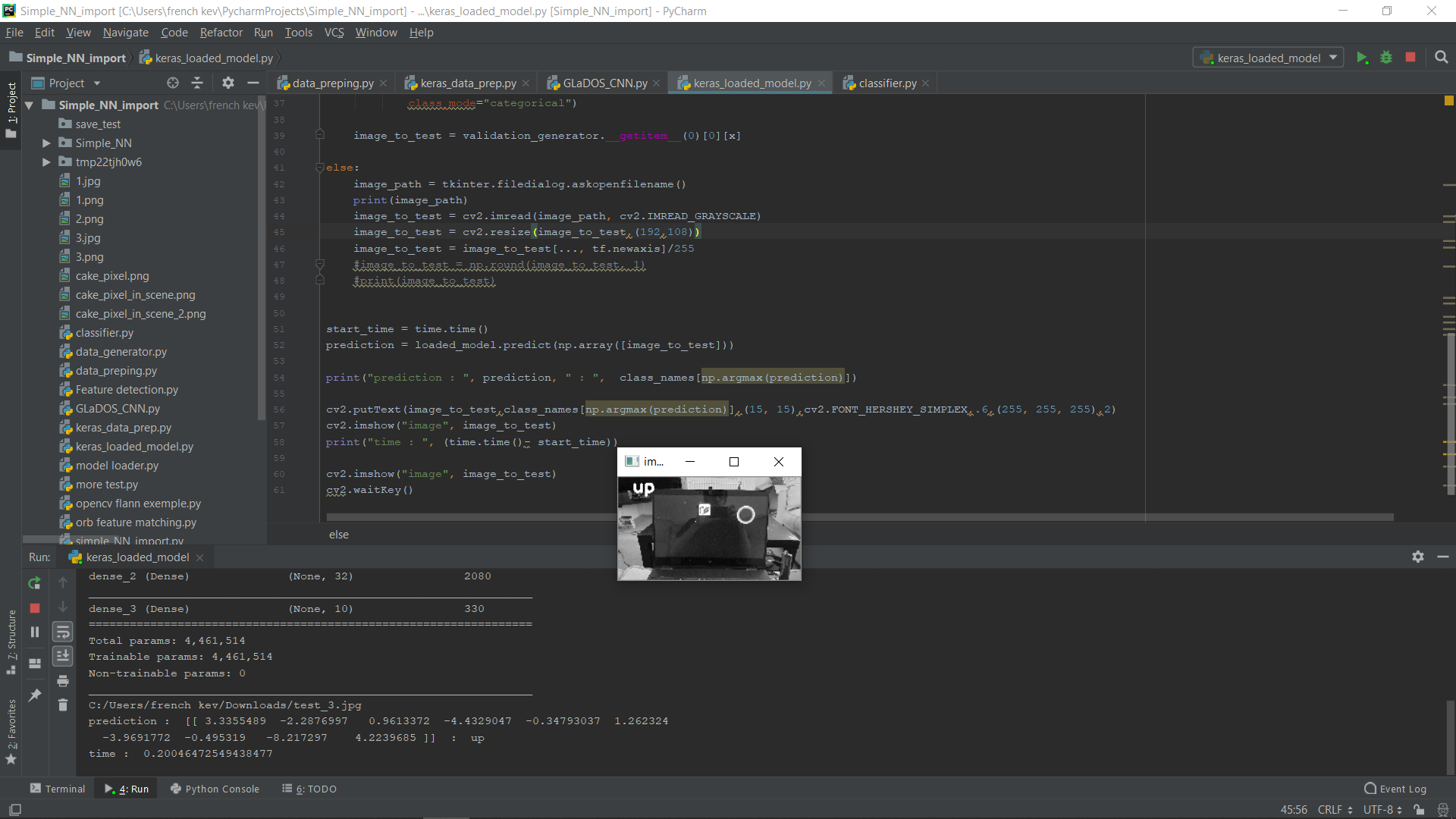A few weeks ago I created a game that learns how to play itself using reinforcement learning (more detail here : game that learn how to play itself). Although this was a fun and great learning experience, the AI making the decision to control the gamepad was directly collecting data in game and never felt like a real player . This is why I decided to come back with this project . This time I wanted to make a standalone robot that can play without any connection to the game or the computer running the game . I also wanted to lean more a computer vision a more specifically about convolution neural networks . A few months prior I put my hand on a Nvidia jetson nano so I decided to build my robot around that . It was a great fit as it can use a picamera and has GPIOs which makes control of servos easy . I started with the design as I wanted to have a bit of fun building something a bit funky looking . I decided to base the design of this robot on one of my favourite video game character, GLaDOS from the portal franchise (What could go wrong here) . I tried imagining how GLaDOS could have been born if she was real . I ended up with something like this :

isn't she cute ?

The next phase was to create a game . I needed something simple . The goal of the game is to place the portal over the cake . Of course as soon as she gets it the game reset . The cake is a lie you can never get it !!!

The following step was to create and train the neural network . neural network training requires data, a lot of it if possible . Here the data would basically be an image of the game and its associated joystick position . There are only 9 joystick positions in this case, left, left up, up, right up....... and centre . Data can be very time consuming to collect this is why I decided to generate synthetic data . instead of taking photos of my screen with the game running I decided to render digital images of the game .

I used random noise in the background hoping that it would force the neural network to learn to ignore it and only focus on what is inside the screen . I also randomly moved the screen so the robot would learn how to play without being perfectly align with the TV . Using this technique I was able to generate half a million of labelled images in only a few hours . After a bit of messing around with the training parameters and architecture of the network it was able to predict what action to take with about 90% accuracy on the synthetic data . Unfortunately the performance on real images are pretty poor .

As you can see in the picture above the neural network predicts UP when it should pretty clearly be predicting LEFT or LEFT UP . I think this is due to my synthetic data being too simplistic with no reflection on the screen an a background way too uniform .
 little french kev
little french kev
Discussions
Become a Hackaday.io Member
Create an account to leave a comment. Already have an account? Log In.